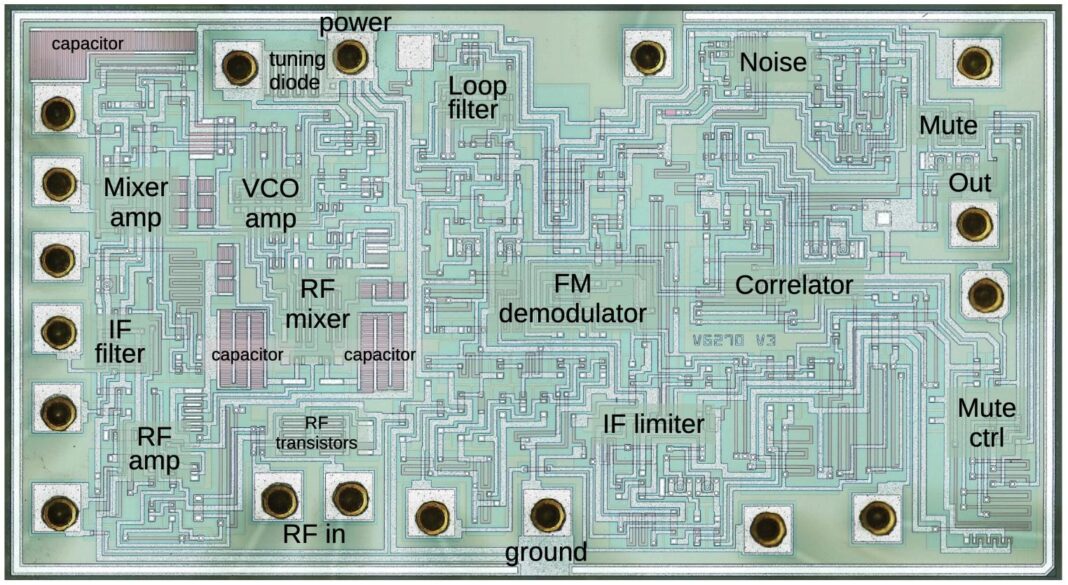During the 1980s a lot of consumer devices suddenly got a lot smaller as large-scale integration using semiconductor technology took off. This included radios, with Philips’ TDA7000 FM radio receiver IC being the first to cram most of what you’d need for an FM radio receiver into a single chip. Recently, [Ken Shirriff] had a poke at analyzing a die shot of the TDA7000, reverse-engineering its functional blocks. How did the Philips engineers manage to miniaturize an FM radio? [Ken] will show you.
The IC was designed in 1977 by two engineers and released in 1983 after some Japanese companies showed strong interest in the IC. While 100 transistors would hardly be LSI today, it was enough to provide a lot of advanced functionality, ranging from differential amplifiers and current mirrors to Gilbert cell mixers. Since it’s an analog chip, it features capacitors in its design in the form of junction capacitors.
In [Ken]’s article, he delves into the process of how the FM signal is processed, amplified, and ultimately turned into a signal that can be sent to an output like headphones or speakers. Although LSI and transistorization are often associated with digitalization and computer technology, analog circuitry like this benefited from it just as much, finally granting humankind the ability to put an entire radio in a single SOIC-packaged chip.
A watch not your thing? How about a credit card? These days a one-chip radio is probably an SDR.

